
Top 20 Plants That Produce Oxygen
Pay less for Retail Quality Plants, See them In-store or Online & have them delivered straight to your door
Check out some of the latest pots just arrived into the Garden Centre - get in Quick these won't last

Montague Egg - Pebble Finish
Montague Egg Pebble Finish Planter Pot look amazing. Modern White & Dark Grey Colours make these pots really stand out as a statement piece. Modstone Pots are made using a similar production process to our Urbanlite range, but also contain a coarse stone grit exterior layer which can be treated to produce a variety of attractive polished and rough finishes Available individually in 4 sizes Small - 26cm H x 26 W Medium - 34cm H x 34 W Large - 44cm H x 44 W X Large - 54 cm H x 54 W Available in 2 Colours Dark Grey Pebble White Pebble
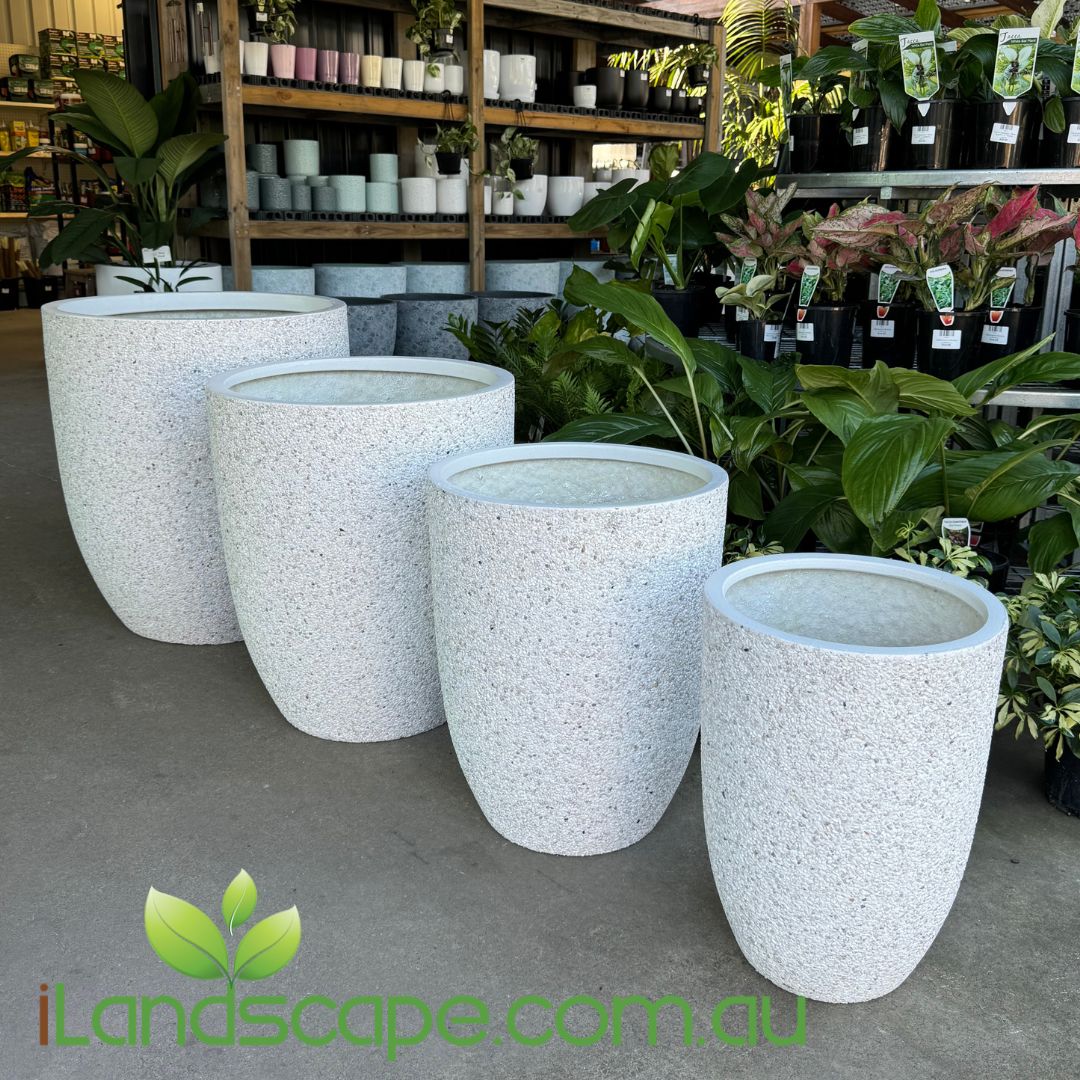
Chamber U Pots - Pebble finish
Chamber U Planter Pots in Pebble finish are the same sizes and shape as the existing Chamber u however they are finished using a Pebble crete finish. They look amazing and their finish is first class. A must to come and view in store if your on the Sunshine Coast Available individually in 4 sizes Small - 350 W x 490 H Medium - 450 W x 560 H Large - 550 W x 640 H X Large - 640 W x 720 H Available in 1 Colour - White Pebble

Mega Belly Pot - Pebble Finish
Mega Belly Pots now available in a Pebble crete Finish, colours are Dark Grey & White and they truly look amazing. Check them out instore in our Garden centre on the Sunshine Coast and online Available individually in 6 sizes Extra Small - 27cm W x 20 H Small - 35 W x 27 H Medium - 45 W x 35 H Large - 57 W x 42 H X Large - 72 W x 53 H XX Large - 90 W x 67 H Available in 3 Colours - Dark Grey Pebble - White Pebble

Ellie Pebble Pot
Beautiful Lightweight pot finished in Pebbles and available in Grey and White 5 Sizes Available Small - 32cm x 30cm Medium - 42cm x 40cm Large - 51cm x 48cm X Large - 61cm x 57cm XX Large - 74cm x 70cm
So many Styles, Sizes and Colours to choose from. We update our pots regularly and have new Pots coming into store every week.
If your looking for a Pot its definitely worth the visit

Fynn Pot Planter
Fynn Pot Planter are made from Lightweight GFC Materials and will stand the test of time. Great pot to use either outdoor or indoor and will suit any kind of plant Available in White & Rust Colour and 6 x Sizes X Small - 30cm x 27cm Small - 37cm x 32cm Medium - 43cm x 38cm Large - 52cm x 44cm X Large - 63cm x 52cm XX Large - 75cm x 62cm hit us up using the chat butting to see if we have the right size and colour ins tock in the Sunshine Coast Garden Centre

Montague Egg Planter Pot
Modstone Montague Egg Pots are suitable for both indoor plants and used extensively in landscaping project for outdoor planting directly with your chosen feature plant in the pot. Modstone Pots are made using a similar production process to our Urbanlite range, but also contain a coarse stone grit exterior layer which can be treated to produce a variety of attractive polished and rough finishes. They are made from a quality pot manufacturer complete with a designer range of strong, durable lightweight planters with a stylish appearance that can match this pot set. Available individually in 5 sizes Small - 26cm H x 26 W Medium - 34cm H x 34 W Large - 44cm H x 44 W X Large - 54 cm H x 54 W XX Large - 65cm H x 65 W Available in Multiple Colours Rust Granite Grey Plain White please note that all images are only indicative colours and should be inspected in person at iLandscape prior to purchasing

Mega Belly Pot
Modstone Mega Belly Pot is a designer range of strong, durable lightweight planters with a stylish terrazzo appearance. Modstone Pots are made using a similar production process to our Urbanlite range, but also contain a coarse stone grit exterior layer which can be treated to produce a variety of attractive polished and rough finishes Available individually in 6 sizes Extra Small - 27cm W x 20 H Small - 35 W x 27 H Medium - 45 W x 35 H Large - 57 W x 42 H X Large - 72 W x 53 H XX Large - 90 W x 67 H Available in 3 Colours Dark Grey or Black Plain White Rust as we cannot guarantee all year around availability of all sizes and colours please email our Nursery for pricing & Availability - please note that all images are only indicative colours and should be inspected in person at iLandscape prior to purchasing

Chambers U Pot
Chambers U Pot are one of our most economical and popular planter pots. Suitable for Outdoor Planting directly into the pot with your plants and also indoor cover pot option. With 4 x Sizes that have great volume you can grow some really cool plants in these pots. Modstone is a designer range of strong, durable lightweight planters with a stylish terrazzo appearance. These Planter pots are perfect of both indoor plants and outdoor planting directly into the Pot with your plant. Modstone Pots are made using a similar production process to our Urbanlite range, but also contain a coarse stone grit exterior layer which can be treated to produce a variety of attractive polished and rough finishes Available individually in 4 sizes Small - 350 W x 490 H Medium - 450 W x 560 H Large - 550 W x 640 H X Large - 640 W x 720 H Available in 3 Colours - Plain White - Granite Grey - Rust
The Fibrestone range of Pots are definitely Quality. Available in many styles and 3 x Colours - White, Black and Industrial Grey
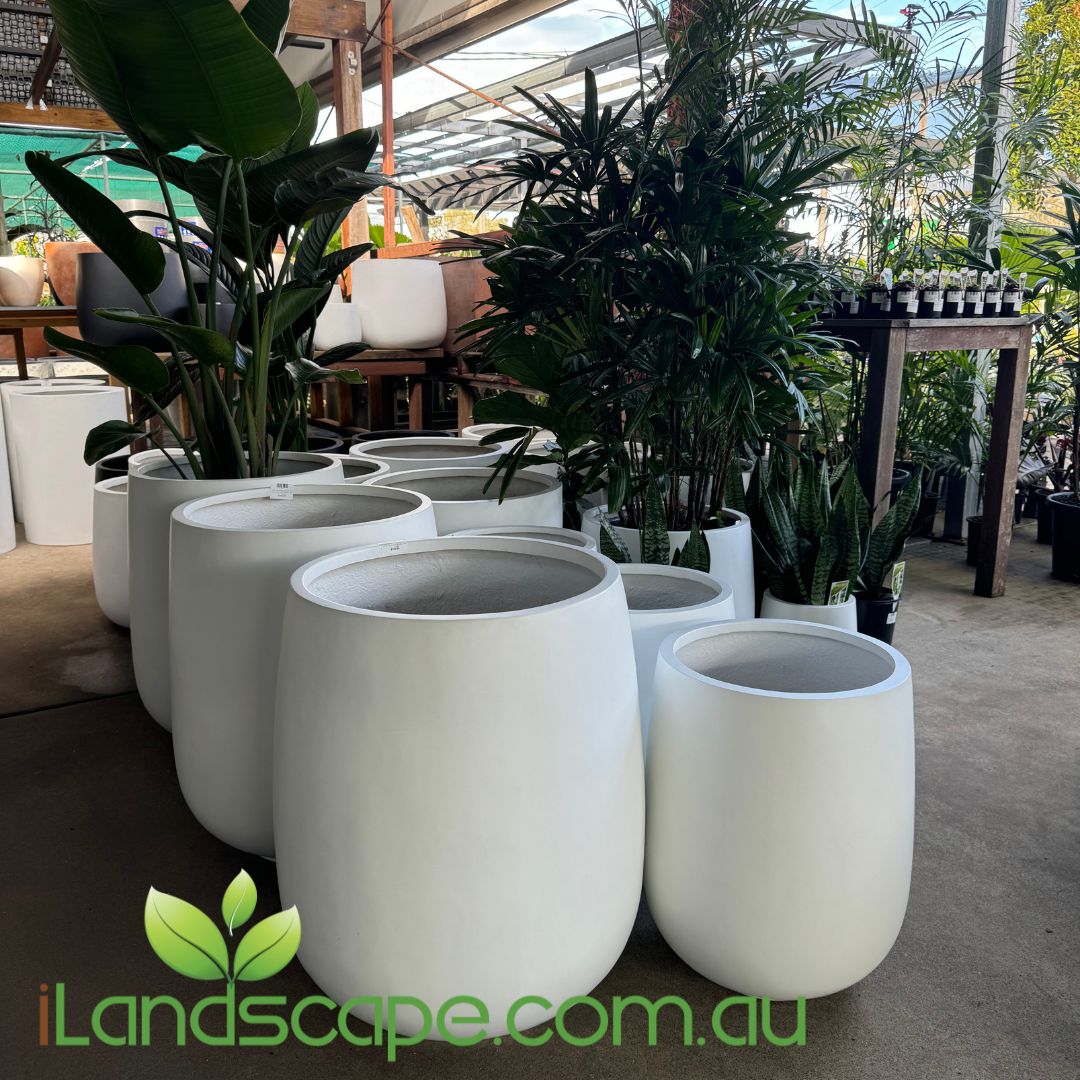
Horseshoe Planter Pot
Fibrestone Horseshoe Planter Pots are a Light Weight Quality Pot perfect for indoor plants use and outdoor planting. these fantastic planter pots are available in 2 x Sizes and 3 x Colours in our Sunshine Coast Nursery & Garden centre Available individually in 2 sizes Small - 56cm H x 45 W Large - 72cm H x 55 W Available in 3 Colours Black White Grey please note that all images are only indicative colours and should be inspected in person at iLandscape prior to purchasing

Tall Cylinder Planter Pot
Tall Cylinder Pot are perfect for both indoor plants and outdoor planting. you can plant directly into the pot with outdoor plants or use them as a cover planter pot for your indoor plant collection. these pots are a Light Weight Quality Pot available in 3 x Sizes and 3 x Colours Available individually in 3 sizes Small - 60cm H x 40 W Medium - 70cm H x 50 W Large - 90cm H x 60 W Available in 3 Colours Black White Grey please note that all images are only indicative colours and should be inspected in person at iLandscape prior to purchasing

Duffel Pot
Duffel Pots are a Light Weight Quality Pot suitable for both Outdoor Planting and Indoor Planter pots. we have them available in 3 x Sizes and 2 x Colours Available individually in 3 sizes Small - 26cm H x 29 W Medium - 36cm H x 41 W Large - 49cm H x55 W Available in 3 Colours Black White Grey please note that all images are only indicative colours and should be inspected in person at iLandscape prior to purchasing
Sale
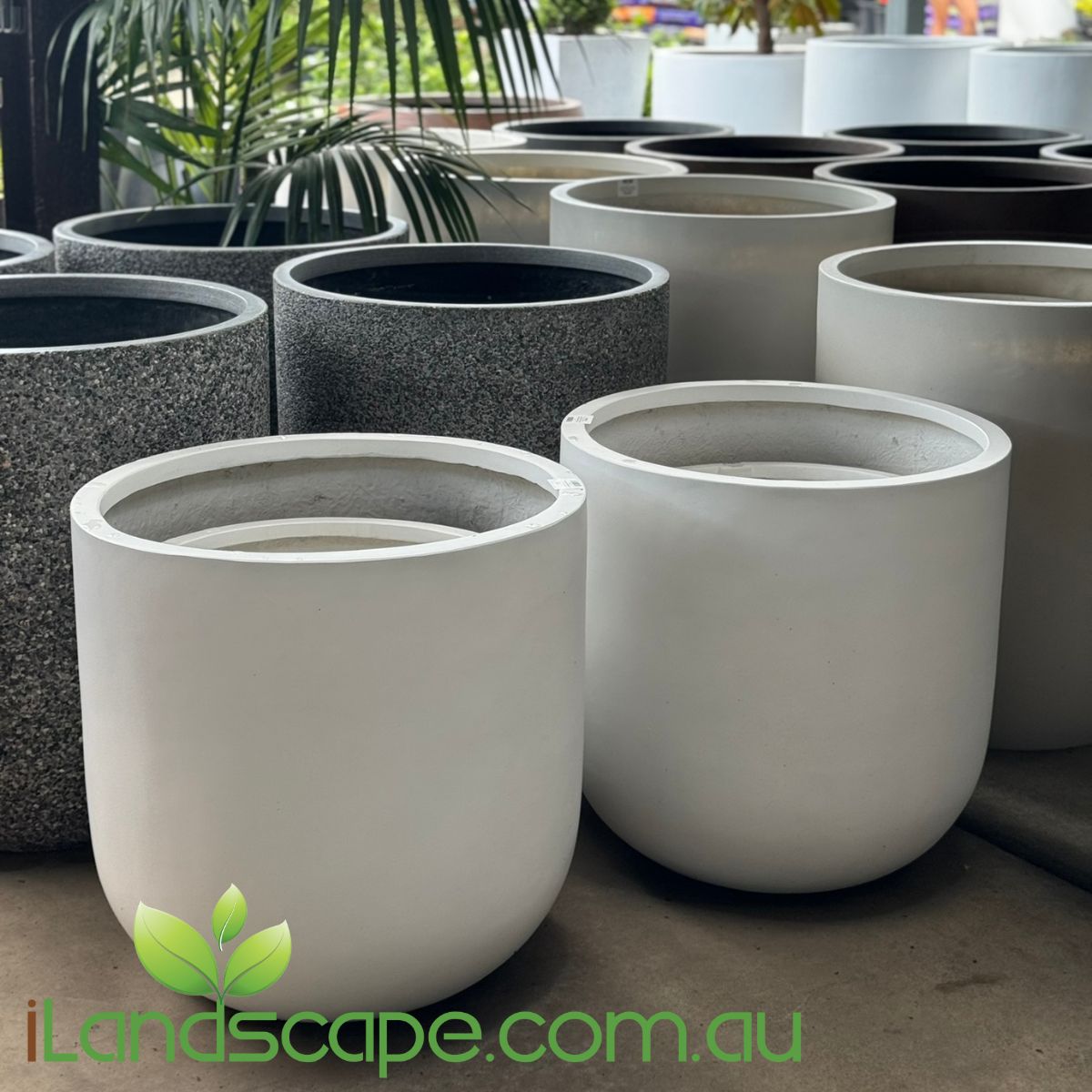
Plaza U Planter
Fibrestone Horseshoe Pot are a Light Weight Quality Pot available in 5 x Sizes and 2 x Colours Available individually in 5 sizes Small - 50cm H x 50 W Medium - 60cm H x 60 W Large - 70cm H x 70 W X Large - 80cm H x 80 W XX Large - 90cm H x 90 W Available in 2 Colours Black White please note that all images are only indicative colours and should be inspected in person at iLandscape prior to purchasing
Pay Less all year around for Tropical plants for your next gardening project. See Cordylines, Heliconias, Palms, Gingers and everything else you need instore and online plus we deliver.

Archontophoenix alexandrae - Alexander Palms
Description Archontophoenix alexandrae, commonly known as the Alexandra Palm or King Palm, is a tall, elegant palm tree known for its smooth, slender trunk and lush, feathery fronds. This palm is often used as an ornamental tree in tropical and subtropical landscapes due to its graceful appearance and relatively fast growth. Flowers The Alexandra Palm produces small, creamy-white flowers arranged in large, branched inflorescences. These flowers are followed by clusters of small, round, bright red fruits. Foliage The foliage consists of large, pinnate fronds that can reach up to 2-3 meters (6.5-10 feet) in length. The leaflets are dark green on the upper side and silver-green on the underside, creating a striking contrast. Fruit The fruits are small, round, and bright red when mature, adding ornamental value. They are often consumed by birds and other wildlife. Form and Size The Alexandra Palm grows in a tall, single-trunk form, typically reaching heights of 15-25 meters (50-80 feet) in its native habitat. The trunk is smooth, grey to light green, and slightly swollen at the base. When grown in cultivation, it usually reaches a more manageable height of 6-12 meters (20-40 feet). Growing Conditions Light: Prefers full sun to partial shade. It can tolerate full sun exposure, which promotes optimal growth. Water: Requires regular watering, especially during the growing season. Keep the soil consistently moist but well-drained. Reduce watering in winter. Humidity: Thrives in high humidity environments. Regular misting or placing the plant near a humidifier can help maintain adequate humidity levels indoors. Temperature: Prefers temperatures between 20-30°C (68-86°F). It is sensitive to frost and should be protected from cold temperatures below 5°C (41°F). Uses Archontophoenix alexandrae is perfect for: Creating a tropical ambiance in gardens and landscapes Planting as a specimen tree or in rows for avenue planting Adding height and elegance to large indoor spaces (in large containers) Coastal and subtropical garden designs Maintenance Pruning: Remove dead or damaged fronds to maintain a tidy appearance. Regular pruning can help prevent disease and pest infestations. Repotting: When grown in containers, repot every 2-3 years to refresh the soil and accommodate growth. Use a well-draining, organic-rich potting mix. Pests: Generally pest-resistant, but can occasionally be affected by spider mites, scale, and palm aphids. Treat infestations with insecticidal soap or neem oil. Notes The Alexandra Palm is known for its relatively fast growth and can quickly become a centerpiece in tropical and subtropical landscapes. It is also salt-tolerant, making it suitable for coastal plantings. Companion Plants Cocos nucifera (Coconut Palm) Hibiscus Bougainvillea Strelitzia nicolai (Giant White Bird of Paradise) These plants share similar growing conditions and can create a visually appealing tropical garden when planted alongside Archontophoenix alexandrae. Archontophoenix alexandrae Common Name Alexandra Palm, King Palm Botanical Name Archontophoenix alexandrae Family Arecaceae Origin Native to the rainforests of Queensland, Australia.
we have a great range of plants that grow under 1.0m - All grown locally and sun hardened

Polygala 'Little Bibi'
Polygala 'Little Bibi' is a dwarf plant that grows approx. 70cm High x 70cm wide and has masses of purple flowers Is ideal for both gardens and pots and requires very little maintenance

Carissa Desert Star
Carissa Macrocarpa Desert Star is one of the most hardiest plants for growing on the Sunshine Coast. This small to medium shrub originates in South Africa, where it gained characteristics of drought and heat tolerance, it can sustain its beautiful deep green foliage all year around even when its dry & hot. desert star can be trimmed, hedged or leave it alone for a beautiful looking plant. produces pure white perfumed flower followed by a small berry. after flowering is generally the time we prune the plant back however it can be pruned more frequently to create shapes and hedges

Hardenbergia 'White Out'
Hardenbergia 'White Out' is a charming and resilient climber renowned for its abundance of pure white flowers and lush green foliage. This Australian native plant, also known as the White False Sarsaparilla, adds a touch of elegance to any garden with its cascading vines and prolific blooms. It typically reaches heights of 1 to 2 metres, making it perfect for covering fences, trellises, or as a ground cover. Thriving in well-draining soil and full sun to partial shade, Hardenbergia 'White Out' is well-suited to various Australian climates. It is drought-tolerant once established and can withstand coastal conditions, making it an excellent choice for low-maintenance landscaping. The white flowers, which appear in late winter to early spring, attract pollinators and provide a beautiful contrast against the deep green foliage. Hardenbergia 'White Out' is ideal for Australian gardeners seeking a versatile and easy-care climber. Its delicate flowers and vigorous growth make it a standout addition to any garden. Enhance your landscape with the charm and resilience of Hardenbergia 'White Out', and enjoy its stunning display of white blooms throughout the seasons.
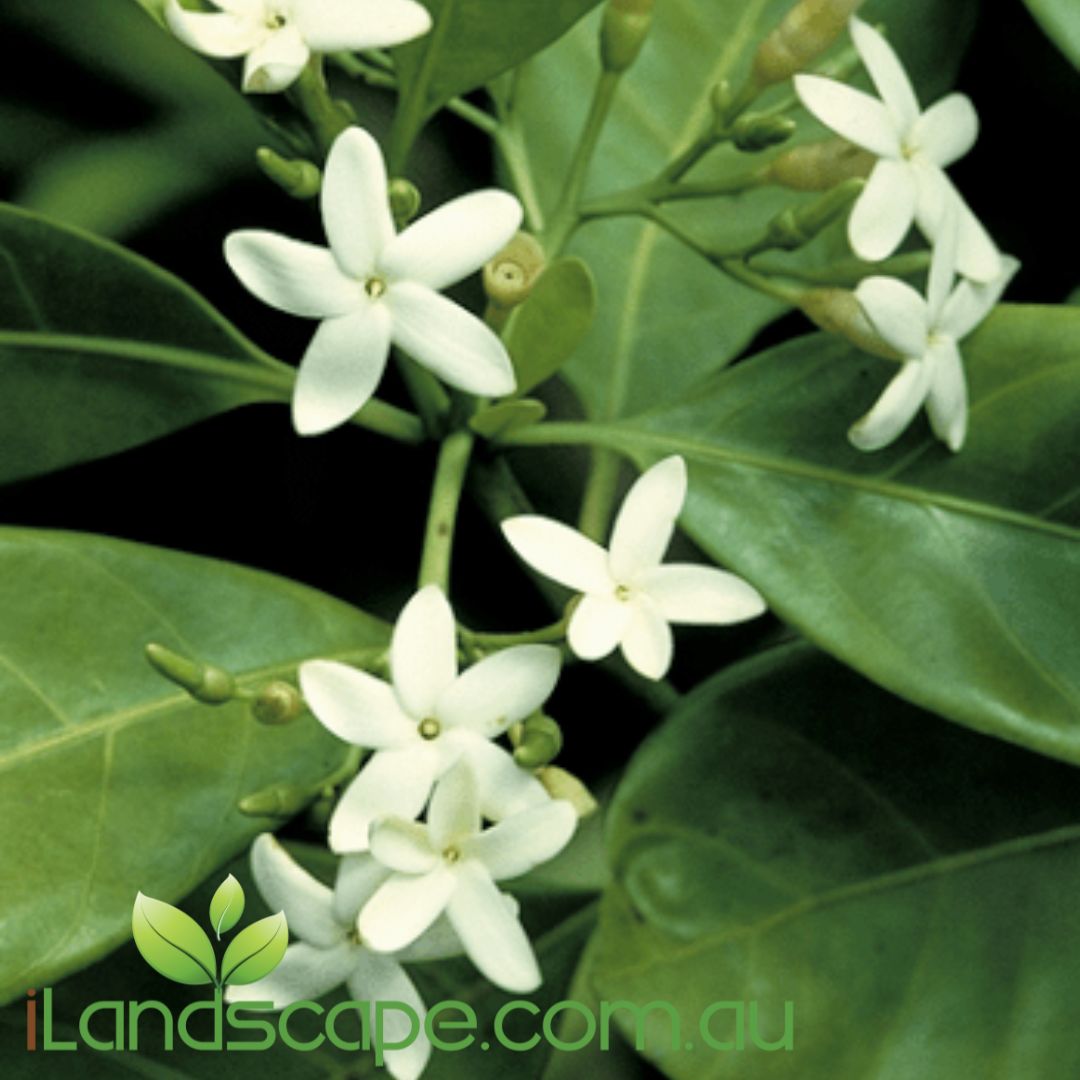
Randia Fitzalanii
Randia Fitzlanii - syn Atroctocarpus - commonly known as the Native Gardenia due to the scented, white starry flowers displayed on this evergreen rainforest tree. Considered a small tree, it can grow upwards of 5m in optimal conditions with a canopy forming habit.
Want to Stage your house with some cool pots and large indoor or shaded plants - come on down and check these out
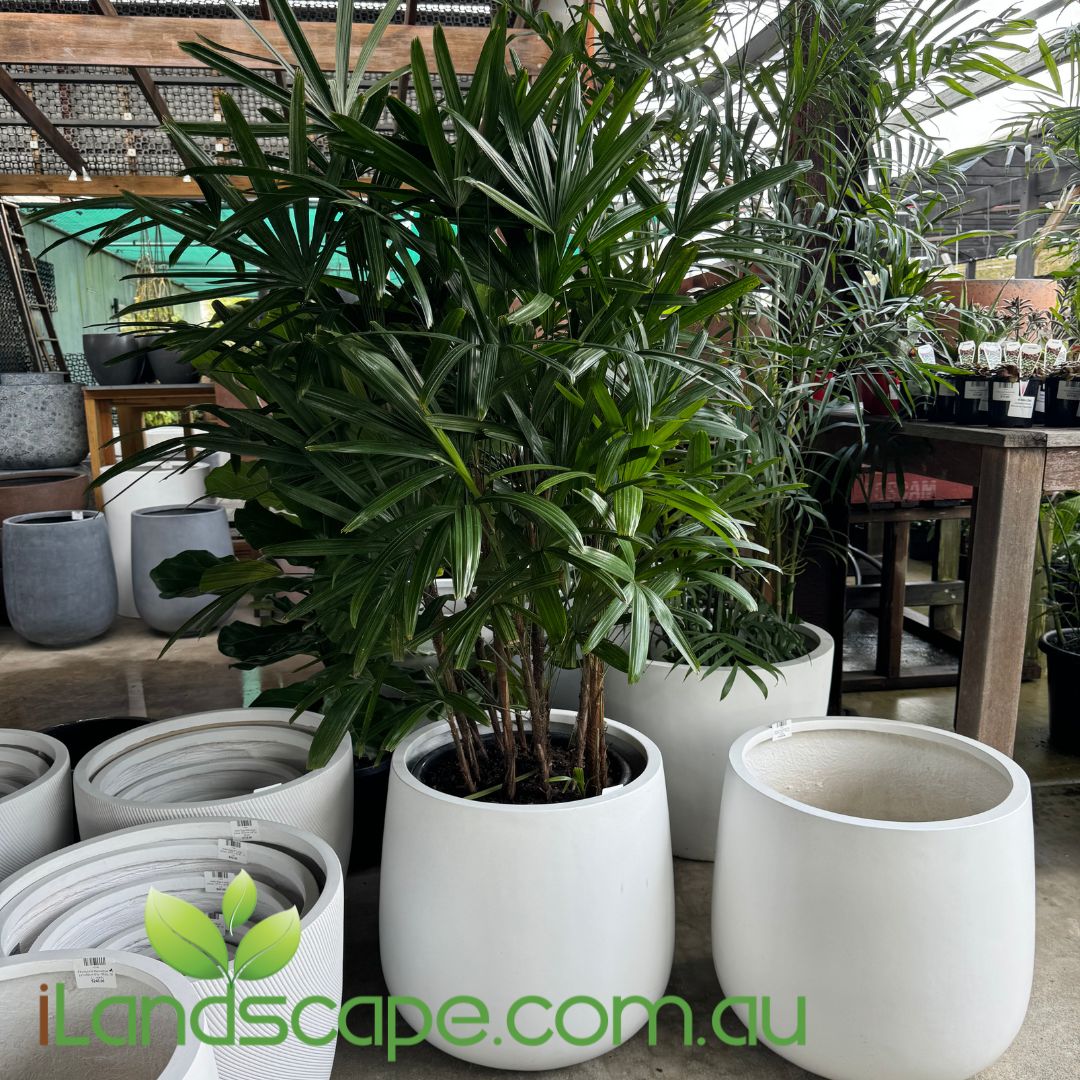
Rhapis Palm
Rhapis excelsa Palms are a beautiful multi stemmed palm commonly used for indoor use and or shaded gardens. they can tolerate full sun however perform best in shaded and indoor environments. they are slow growers, typically growing around 10-15cm per year in an indoor environment
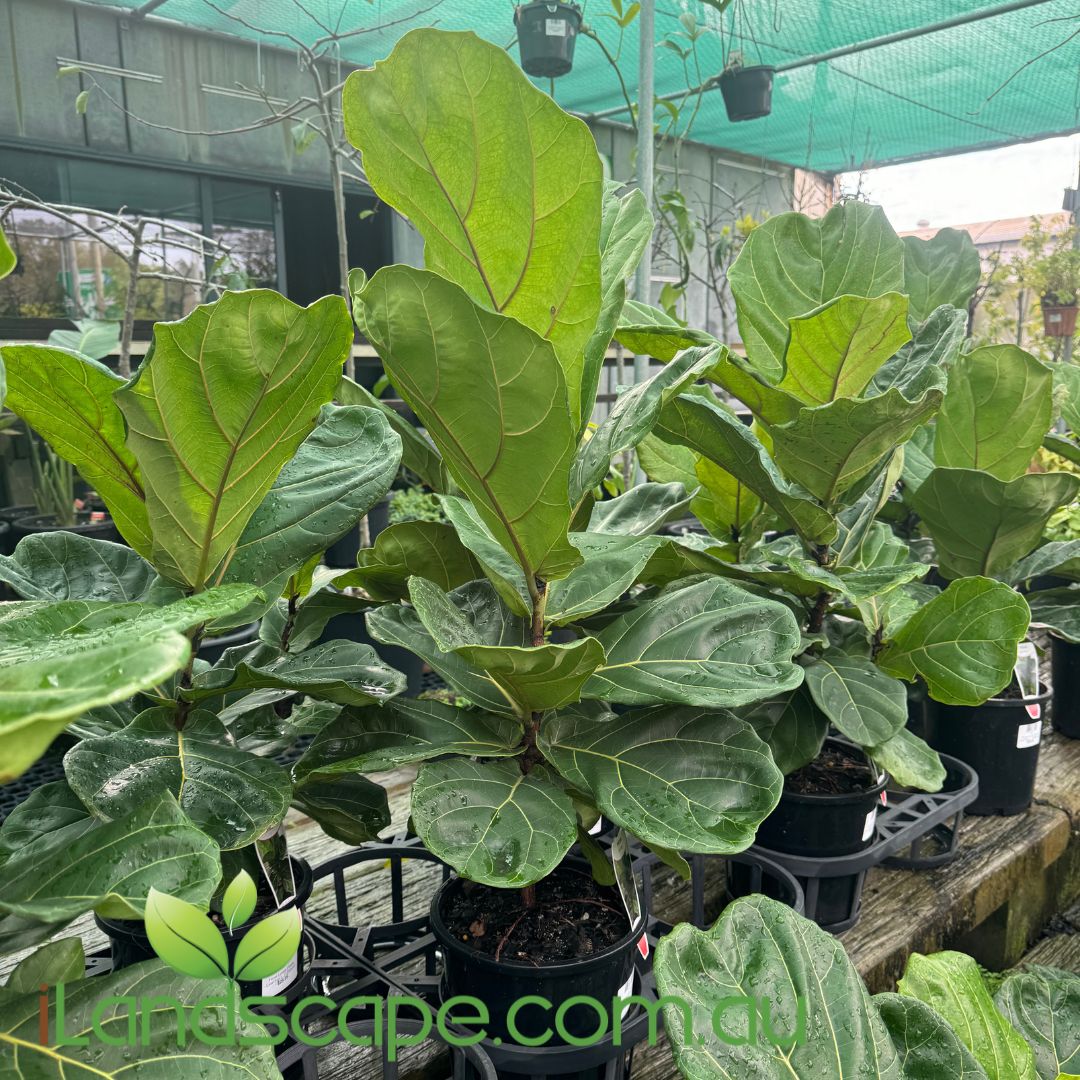
Ficus Lyrata (Fiddle Leaf Fig)
Ficus Lyrata more commonly known as the Fiddle Leaf Fig. mainly used in indoor planting however can be planted outside in full sun where in the ground can grow to approx 10-15m tall. one of the most common problems when looking after a fiddle leaf fig is over watering. we recommend one good watering then let the plant dry out before watering again. Rotate the plant once a week if growing indoors and it will keep growing straight and not want to lean towards the light
Get them before they sell out
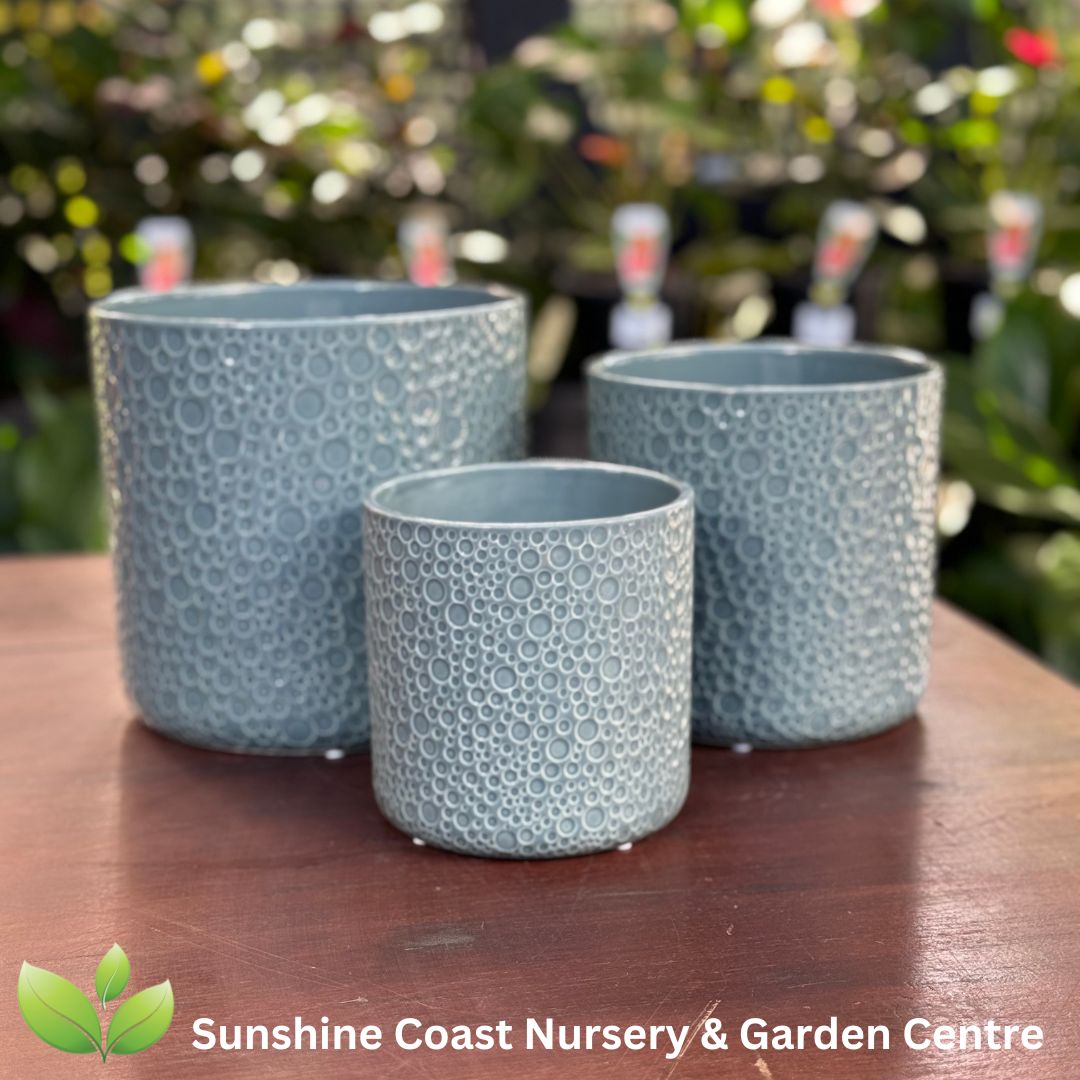
Dots Cylinder Pot
Dots Cylinder Pots will bring your indoor plants to life with their cool pattern and beautiful colours are available in 3 x colours and 3 x sizes Small - 13cm x 13cm Medium - 16cm x 16cm Large - 19cm x 19cm Colours Blue, Grey & White
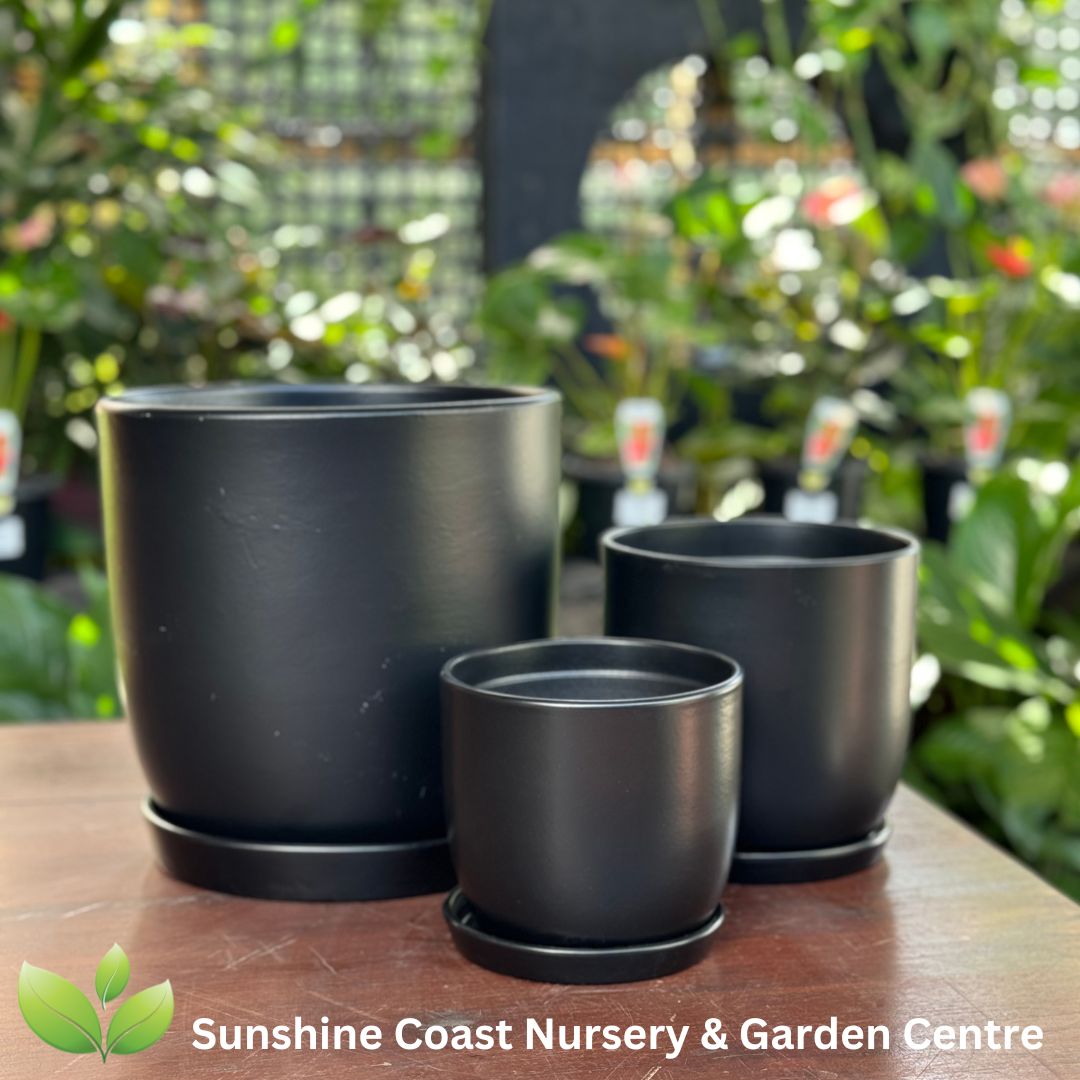
Jessa Egg Pot
Jessa Egg Pots are an amazing priced indoor pot set that come with a colour matching Saucer they are available in 2 x colours and 3 x sizes Small - 14cm x 14cm Medium - 17cm x 17cm Large - 25cm x 25cm Colours - Black & White
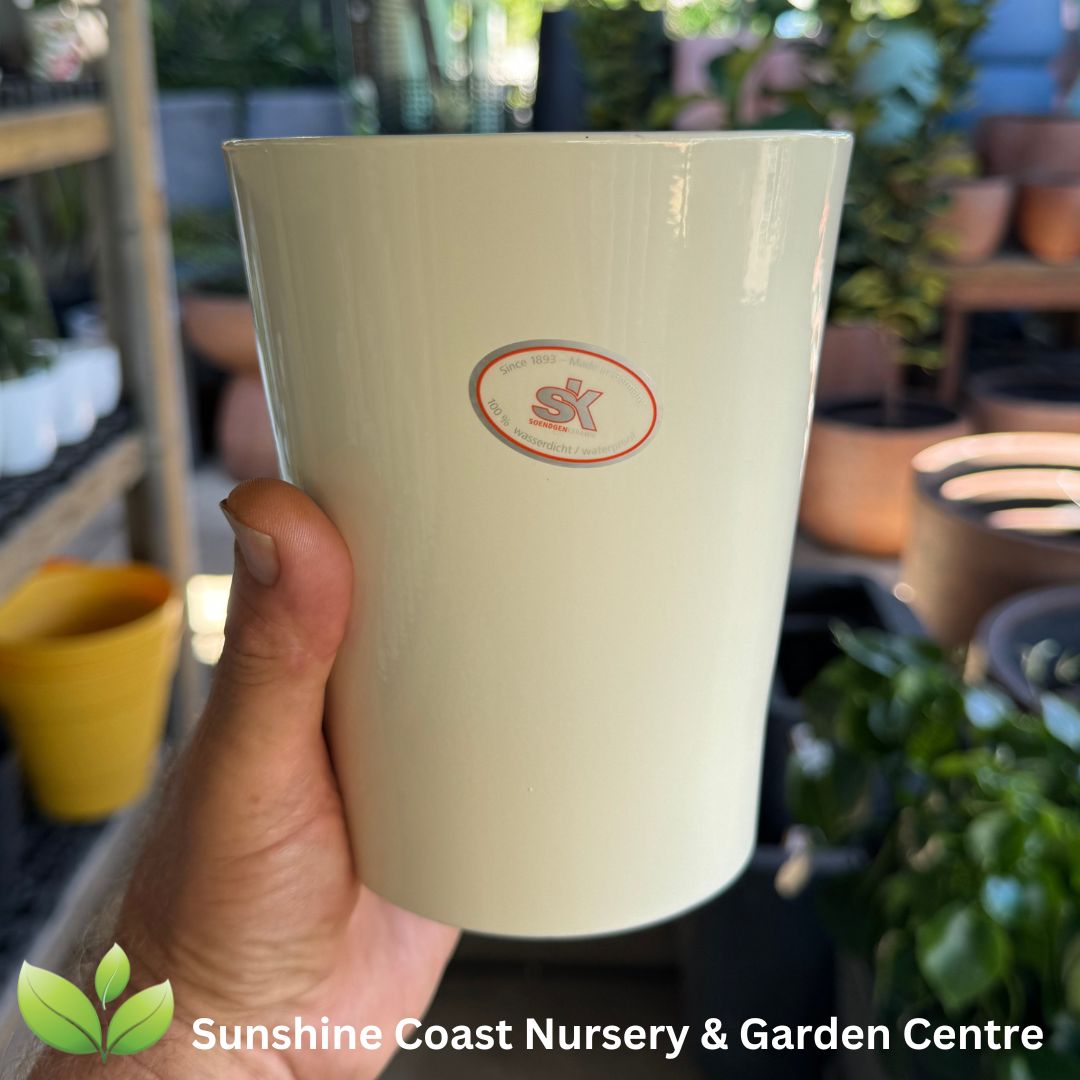
Merina Indoor Orchid Pot
Beautifully German made indoor pots that suit 100mm or 125mmpoly pots which make them perfect for displaying any small indoor plant or orchid Available in Multiple colours please hit us up using the chat button to see what we have in stock in the Sunshine Coast Nursery & Garden centre
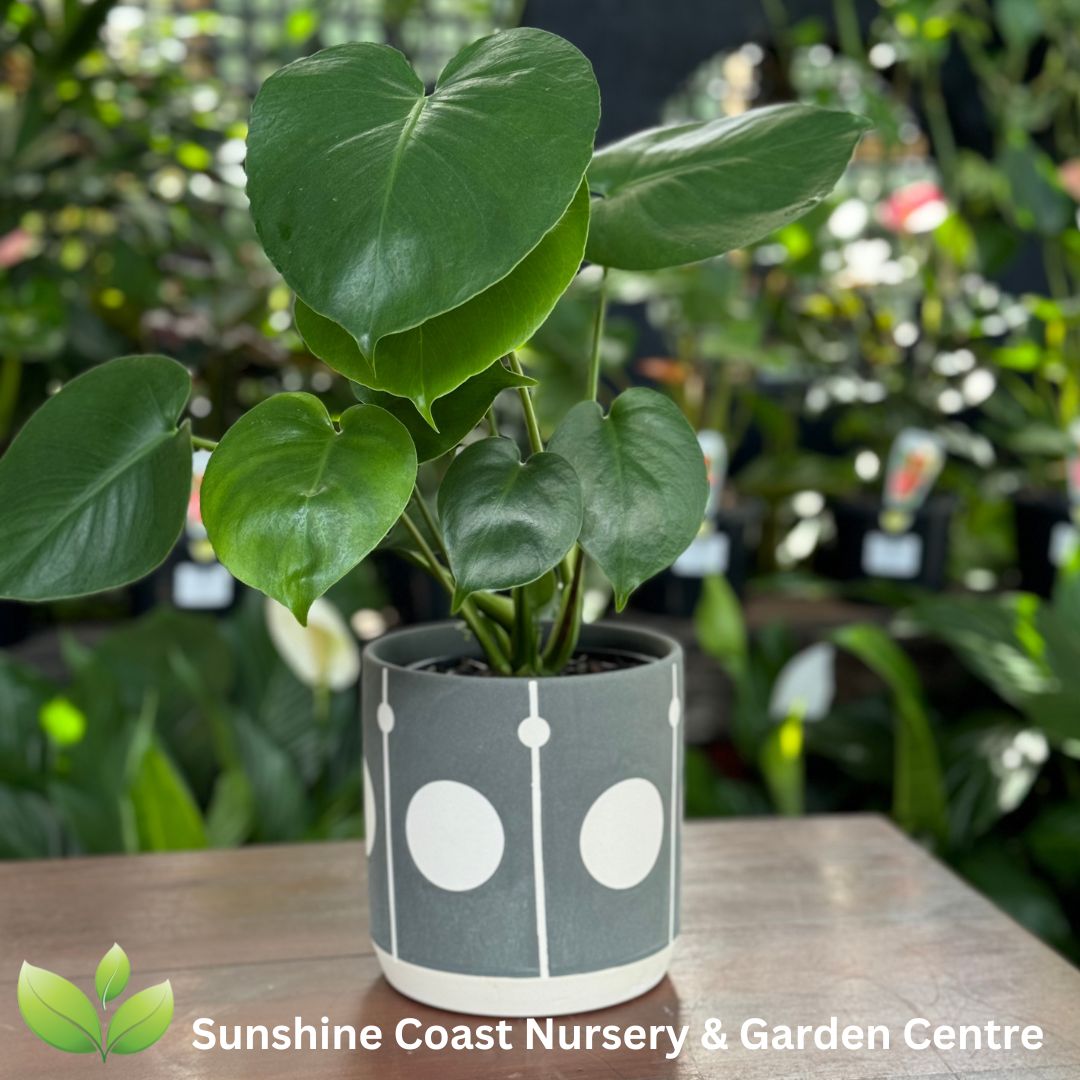
Osana Pot
Osana Pots will bring your indoor plants to life with their cool pattern and beautiful colours are available in 2 x colours and 1 x sizes Small - 16cm x 16.5cm Colours Blush & Grey

Redcor Garden Edging X 2.4m Lengths
Introducing BlueScope® REDCOR® steel, the Australian Made “corten” weathering steel Proudly made in Australia by BlueScope®, REDCOR® steel is cold rolled and has been specifically developed for Australian harsh conditions. Its cleaner to work with and displays an overall better uniform finish than imported alternatives. This steel has an increased resistance to corrosion as it forms a protective layer of oxide on its surface which regenerates as required over the steels life. REDCOR® steel will appear blotchy for several months before you get a nice even coating of colour. Slight variations in colour will occur, this is due to differences in soil, air conditions and can vastly vary depending on your location. Colours can range from dark orange to a rich dark brown. Over time it will continue to darken until you are left with a stunning, textured brown. Gauges Available & Heights Available: 1.6mm 100mm, 150mm, 185mm, Gauges Available & Heights Available: 2.0mm 230mm, 290mm, 390mm, 580mm Lengths are all 2.4m.

Redcor Steel Rings - 765mm Diameter
Steel Redcor rings Looking for something stylish in your next garden project check out the “rusted” REDCOR® weathering steel ring planters. Made from 2.0mm thick Australian bluescope steel these garden rings will set your next landscaping project apart from the rest Manufactured in Melbourne, Australia Steel rings are made to order, please allow approximately 10 days for ordering and delivery

Redcor Steel Rings - 1150mm Diameter
Steel Redcor rings Looking for something stylish in your next garden project check out the “rusted” REDCOR® weathering steel ring planters. Made from 2.0mm thick Australian bluescope steel these garden rings will set your next landscaping project apart from the rest Manufactured in Melbourne, Australia Steel rings are made to order, please allow approximately 10 days for ordering and delivery

Redcor Steel Rings - 1530mm Diameter
Steel Redcor rings Looking for something stylish in your next garden project check out the “rusted” REDCOR® weathering steel ring planters. Made from 2.0mm thick Australian bluescope steel these garden rings will set your next landscaping project apart from the rest Manufactured in Melbourne, Australia Steel rings are made to order, please allow approximately 10 days for ordering and delivery

Galvanised Edging x 2.4m Lengths
AUSTRALIAN MADE GALVANISED STEEL EDGING – AN AFFORDABLE AND DURABLE EDGE. Our Australian made BlueScope®, hot dipped Galvanised steel edging has a structural guarantee of 10 years, ensuring your confidence when purchasing and installing FormBoss™ in your garden. Galvanised steel will appear shiny and spangled when first purchased, however after a year or so the shine will dull down to a matte grey, all though you will still be able to notice the spangled effect. Galvanised steel edging blends in very well, as grey is a neutral colour and doesn’t take the focus off the plants and lines of the garden, it creates flawlessly separated contrasts in your design. To get the most out of your Galvanised steel edging be sure to pick up some cold galvanised spray paint to cover the areas you screw or cut as doing this during the installation exposes the inner metal which needs to be covered to protect the longevity of the edging. If you notice some surface rust from being nicked with the mower or whipper snipper we recommend using a wire brush to brush down the area, ensure it’s dry, and then coating the areas generously with your cold galvanised paint. We supply edging for practically all garden applications, our retail gauges are perfect for your garden borders around your family home, however if you require something stronger for commercial pathways or concrete formwork, our industrial strength gauges will stand up to the most severe conditions and will last up to 40 years in the ground. Gauges Available & Heights Available: 1.6mm 100mm, 150mm, 185mm, Gauges Available & Heights Available: 2.0mm 230mm, 290mm, 390mm, 580mm Lengths are all 2.4m

EarthLife Garden Mate
EarthLife Garden Mate Garden Mate is a fast acting clay breaker with no need to dig it in, just water. Most people notice improvements in 2-3 weeks after application. Why use Garden Mate? HAVE YOU EXPERIENCED: Watering your garden and the water sits on top? Bending the prongs on your digging fork? Breaking the blade on your transplanting trowel? Watering your garden and the plants still wilt? All of the above issues become a distant memory by using Garden Mate soil conditioner before, during and after preparation of your garden beds. What does it do? CLAY SOILS Garden Mate is a fast acting clay breaker with no need to dig it in, just water. Most people notice improvements in 2-3 weeks after proper application. If not then re-apply. Garden Mate breaks hydrophobic crust on all soil types, provides better moisture penetration, creates softer soil and improves drainage and nutrient availability. SANDY SOILS Binds sand particles together in sandy soils which reduces nutrient leaching and improves moisture availability.

EarthLife Garden Delight
EarthLIfe Garden DelightA 100% natural composed plant food containing 60 mineral elements and humates including natural rock phosphate, plant available silica, organic material and over 30 beneficial microbes and fungi species.Does not contain animal waste eg. manures. A balanced diet for your plants, minimising the need for synthetic supplements.Garden Delight is very environmentally friendly, and is safe for use in playgrounds, parks and your home gardens and is also Vegan friendly.What does it do? Promotes healthier plants more able to withstand adverse conditions. Encourages earthworm activity. Why use Garden Delight?Garden Delight is a superior fertiliser to other forms of organic material (eg. feedlot or poultry manure). It contains a balanced range of nutrients to promotewater retention, restore soil fertility and grow healthier plants.Soil is comprised of a multitude of minerals, microorganisms, organic material and humus. The fact that each component of the soil is equally as important asthe next is often overlooked. Earth Life Pty Ltd has developed Garden Delight with sufficient quantities of major and minor elements for strong, healthy plantgrowth.

EarthLife Lawn Blend
Earthlife Lawn Blend is a complete lawn conditioner and fertiliser with 60 minerals including nitrogen, natural rock phosphate, potassium, sulphate, calcium, magnesium, iron, zinc, copper, boron, plant available silica and over 30 beneficial species of soil micro-flora. Lawn Blend is able to enhance the growth of all lawns, as it not only feeds your lawn, but conditions the soil as well. This is achieved through Lawn Blend’s ability to improve soil structure and provide the ideal environment for earthworm activity.This naturally encourages better lawn growth. Lawn Blend has similar abilities to Gypsum and Dolomite, in that it will reduce sodium levels in the soil profile, adjust and maintain pH while increasing the sweetness and friability of the soil.Other benefits of Lawn Blend include the ability to increase root structure, improve soil moisture retention and enhance the moisture-nutrient exchange betweenthe soil and the lawn’s root system. As you would understand, by improving the root structure of the lawn, its ability to access nutrient is increased and is therefore more able to withstand adverse conditions.

EarthLife Veggie Mate
EarthLife Vege Mate is a 100% natural plant food containing 60 mineral elements, including plant available silica, natural rock phosphate, organic material and over 30 beneficial soil micro-fora species. Does not contain animal waste products. What does it do? Promotes healthier vegetables/herbs that are more able to withstand adverse conditions. Helps plants resist pest and diseases and improves post harvest shelf life. Encourages earthworm activity and discourages nematodes. Where and when to use it In the preparation of all new and existing vegetable gardens. Gives excellent results especially when used in the preparation of the vegetable bed and in the planting hole. How often do you use it?LEAF VEGETABLES every 6-8 weeks.FRUITING VEGETABLES eg; tomato, brassicas, every 3-4 weeks. Also use Fruit Blend @ 100-200gm/m2 (1-2 handfuls) every 3-4 weeks.More often if necessary.Other important information Is an allowable input for organic growers. Safe for use on all types of vegetables and herbs. Vegan friendly. Gives quicker results when worked into the soil. Can be spread over existing vegetables and watered in. Will not burn plant foliage or roots. For best results use in conjunction with other Earthlife garden products. Contains all natural ingredients including plant available silica and natural rock phosphate
Whenever we are potting Plants into Pots in our Garden Centre we use the Rocky Point Premium Potting Mix and for the ground we use their Garden Soil.
We Deliver locally all over the Sunshine Coast for $65.00 per load in our plant truck
Real people, real feelings and experienced horticulturist that can help you every step of the way
Buy with confidence from people who love to grow plants using only the best products